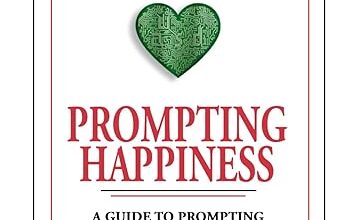Packaging’s Evolution: Navigating Disruption and Sustainability

The packaging industry, like many others, has undergone a great shift due to the COVID-19 pandemic. As consumers adapted to new norms, the industry had to keep pace. Madeline Honingford, CEO of Re Company, an organization in the packaging sector, shares her thoughts on how the pandemic has shaped the packaging industry and the challenges and opportunities that have arisen.
The pandemic prompted changes in consumer behavior that had a profound impact on the industry, and companies had to innovate to meet new demands. Honingford says, “We’ve witnessed a huge boom in waste management crisis around the world that necessitates dramatic action.”
Central to this transformation is sustainability, a principle that Re Company values greatly. For them, sustainability isn’t just a trend, but a necessary transition to ensure a healthier planet. Honingford explains that Re Company’s mission, which began in 2019, was to address the pressing issue of packaging waste. The focus was on developing a system of reusable packaging. In this system vessels are reused hundreds of times instead of once, thereby reducing waste by up to 90% in food systems. Re Company’s products are not just reusable, but also designed with human-centered principles, focusing on shifting behavioral change towards rent-and-reuse model.
When questioned about her vision for Re Company in the next five years, Honingford acknowledges the fluidity of the packaging industry. “We’ve pivoted from a direct-to-consumer model to a business-to-business approach,” says Honingford. This shift involved offering packaging vessels and return and rental kiosks, responding to the evolving needs of clients. “There’s a lot of conversation going on now among big companies in higher education, entertainment and healthcare, about how to effectively reduce waste. Our strategies are being designed to meet these pressing needs.”
Honingford stresses the importance of the materials they use and the end-of-life solutions they offer. They don’t just manufacture reusable packaging; they also commit to recycling and reclaiming their products, contributing to a circular economy of packaging.
“The purpose of our work,” says Honingford, “is to contribute to a future where all packaging fits within a circular supply chain. This way a manufacturer that creates 100,000 units of food containers would ideally see these same 100,000 units again at the end of their useful life, be able to recycle them, and make them into new containers. This will effectively end the take-make-waste crisis that is overflowing the world’s landfills.”
Honingford speaks about their collaborative work with corporations like Google and Starbucks to scale reusable options, illustrating how Re Company tailors its solutions to individual clients’ needs. Their work involves anything from designing the optimum cup that will help people engage in a reuse program, to designing a “smart” return kiosk which is radio-frequency-information-device-enabled, designed to automate the system on a campus.
The impact on consumers goes beyond convenience. It extends to a broader environmental effect. The shift towards sustainability aligns with the growing consumer demand for eco-friendly products and packaging solutions.
Honingford doesn’t shy away from discussing the hurdles that Re Company, along with other players in the packaging industry, face. She highlights the significance of regulatory changes and the role they play in promoting sustainability. Honingford notes that while countries like Singapore, Hong Kong, France, and Germany have embraced progressive regulations mandating reusable options for food service providers, the United States has been slow to adopt similar measures. This regulatory lag is a significant obstacle for anyone working towards reducing waste. “Until regulations are in effect, there is no real incentive for large corporations to invest in sustainable infrastructure for reusable packaging.”
Honingford also acknowledges the challenge of corporate behavior. Many corporations express interest in reusable packaging, but these strategies are often driven by public relations and short-term gains. A lack of commitment to long-term sustainability and carbon reduction remains a prevalent issue across industries. “We’ve even seen large corporations in the US choose not to implement a reuse system merely because they are unwilling to buy one more dishwasher.”
COVID-19 significantly impacted Re Company. For a company that primarily focuses on takeaway and food service packaging, the pandemic proved to be highly disruptive. With on-site dining severely limited, Re Company found itself in hibernation mode, channeling efforts towards research and development to prepare for the post-pandemic era.
The disruption was particularly felt across corporate campuses and university campuses, where there was no ability to do rent-and-return packaging due to fear of transfer of any kind of sickness, that these campuses actually began replacing plates in dining halls and had people have disposable containers instead.
While the pandemic cast a daunting shadow, it also provided an opportunity for reflection and reinvention within the packaging industry. Honingford states that the challenges of the past few years are forcing the industry to reevaluate its practices and strive for a more sustainable future. “The pandemic was a crucial learning experience for the entire industry,” she notes, highlighting the significance of adaptability and the need for emergency strategies. Companies are now diligently working on building resilience into their operations, ensuring they can weather unforeseen disruptions more effectively.
Honingford explains the importance of collective efforts and collaboration within the industry. Recognizing the scale of the challenges they face, she calls for partnerships that transcend competition. “Sustainability should be a shared goal,” she insists, highlighting that industry players need to work together to foster innovation and bring about change. These collaborations could include sharing best practices, jointly advocating for regulatory change, and investing in the infrastructure needed to facilitate large-scale adoption of reusable packaging. Such unity, driven by the urgency of global environmental concerns, might be the catalyst that accelerates the transformation of the packaging sector into a sustainable, circular economy that benefits both businesses and the planet.



